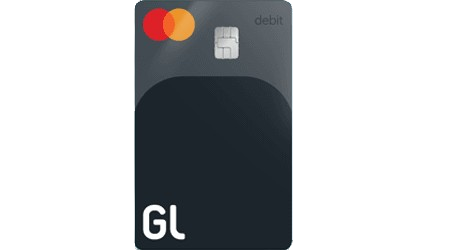Compare kids investing products
What is the Finder Score?
The Finder Score applies to 45+ kids' debit card options. It takes into account the card's fees, features, age requirements, ATM access and more — this gives you a simple score out of 10.
To provide a Score, we compare like-for-like debit cards. So if you're comparing the best kids' cards with no monthly fees, you can see how card stacks up against each other by features, opening deposits and other benefits.
Paid non-client promotion. Finder does not invest money with providers on this page. If a brand is a referral partner, we're paid when you click or tap through to, open an account with or provide your contact information to the provider. Partnerships are not a recommendation for you to invest with any one company. Learn more about how we make money.
Finder is not an advisor or brokerage service. Information on this page is for educational purposes only and not a recommendation to invest with any one company, trade specific stocks or fund specific investments. All editorial opinions are our own.
How to Open a Kid’s Investment Account
It’s never too early for children to start learning about money. And the earlier they build their financial literacy, the better equipped they’ll be to navigate their finances later in life. Set your little ones up with a kid’s investment account in three simple steps.
Step 1: Pick an account
Kids can’t open an investment account on their own. That’s where you come in. The type of account you’ll need is called a custodial account. And custodial accounts come in three distinct flavors: UGMA and UTMA accounts are designed for kids without taxable income, while custodial IRAs are for older children earning money from a part-time job.
Uniform Gifts to Minors Act (UGMA) account
Uniform Gifts to Minors Act (UGMA) accounts allow you to invest in stocks, bonds, mutual funds and insurance policies on behalf of your little one. Whatever the value of the account, it belongs to your child. When they reach the age of majority in their state — typically between the ages of 18 to 21 — they take control of the account.
The first $1,050 deposited into a UGMA or UTMA account is tax-free, the second $1,050 is taxed at the child’s tax rate, and anything beyond this is taxed at the parent’s rate. Another perk? UGMA and UTMA accounts have no contribution limits.
Uniform Transfers to Minors Act (UTMA) account
Uniform Transfers to Minors Act (UTMA) accounts are similar to UGMA accounts — except they let you invest in a wider range of assets, including real estate. UTMA accounts may also have a later termination date: UGMA account funds are typically distributed when the child turns 18, while UTMA accounts may terminate as late as 25.
Custodial IRA
Babysitting, dog walking, yard work for neighbors — it all counts as income. For older kids earning money, you’ll want to consider a custodial IRA or individual retirement account.
“But it’s too early to worry about retirement,” you say. “My kid’s only 15!” Well, it’s never too early to plan for retirement. And you have the opportunity to give your child a serious leg up on the future with a custodial IRA.
Imagine you put $50 monthly into a custodial account. In 30 years, you’d have contributed $18,000, but your child would have over $50,000 — based on a 6% annual growth rate with interest compounded monthly.
What’s more, is that custodial IRAs are tax-advantaged. And there are two options available:
- Traditional. Contributions are tax-free but withdrawals after the age of 59½ are taxed as ordinary income.
- Roth. Contributions are taxed as they’re deposited but anything withdrawn after the age of 59½ is tax-free.
Now, here’s the rub: Since most kids don’t earn enough to owe income tax, a traditional IRA’s tax-free contribution won’t be overly beneficial. At least not when it comes to depositing all that babysitting money. But this is precisely why a Roth IRA is so advantageous for kids and teens — you’re essentially getting tax-free contributions and distributions if you go the Roth route.
Like UGMA and UTMA accounts, custodial IRAs transfer to your child once they reach the age of majority in your state.
Step 2. Pick a broker
Once you’ve settled on an account, it’s time to select a broker. Narrow down your platform options by those that offer custodial accounts. Then consider the following:
- Fees. Scan the fine print for inactivity fees, transfer fees and the like — commissions are largely a thing of the past, but account fees are still quite prevalent.
- Ease of use. Prepare your child to take ownership of their account with an intuitive platform that’s easy for them to navigate.
- Minimum deposit requirement. Avoid barriers to entry with accounts that don’t enforce any minimum deposit requirements.
- Investor feedback. Scout third-party review platforms like the Better Business Bureau and Trustpilot for potential red flags reported by existing investors.
- Educational materials. Opt for a broker with beginner-friendly educational content to help your child increase their financial literacy.
3 steps to open a custodial account
Once you’ve settled on a broker, here’s a quick look at the account-opening process:
- Complete the application. Fill out an application form with all required personal information for both the custodian — the adult who will manage the account — and the beneficiary — your child. Be prepared to supply basic personal details as well as your Social Security number and driver’s license.
- Fund the account. Transfer money into the brokerage account with an electronic funds transfer, wire transfer or check.
- Explore investments. Use a tool like a stock screener to review and filter potential investments by price, company name, ticker symbol and more.
Step 3. Pick an investment
Perhaps the most exciting step in this process is picking your investments. And it’s here that you have the opportunity to get your kid in on the action.
Kid-friendly stocks
What kid would turn down the opportunity to own a little slice of Disney or McDonald’s? The good news is that most of the companies children are familiar with are well-established blue-chip stocks and are considered relatively low-risk investments.
Here are just a few ideas to get you started:
- Amazon (AMZN)
- Apple (AAPL)
- Coca-Cola (KO)
- Disney (DIS)
- Electronic Arts (EA)
- Facebook (FB)
- Hasbro (HAS)
- Mattel (MAT)
- Netflix (NFLX)
- Nike (NKE)
- Target (TGT)
- Walmart (WMT)
ETFs for long-term growth
While not quite as glamorous as stocks, exchange-traded funds offer the opportunity for diversified, long-term growth. Kid-friendly translation? They spread your money across different types of companies so you’re less likely to lose money in the long run.
As far as ETFs are concerned, some are more exciting than others. And industry or niche-specific ETFs give you the opportunity to chat about what types of businesses your child is interested in.
A few conversation starters might include:
- First Trust Cloud Computing ETF (SKYY)
- Global X Robotics & Artificial Intelligence ETF (BOTZ)
- Invesco DB Precious Metals Fund (DBP)
- Invesco S&P Global Water Index ETF (CGW)
- iShares Agribusiness UCITS ETF (SPAG)
- iShares S&P Global Clean Energy Index Fund (ICLN)
Bonds for safety
Bonds are perhaps the least-exciting on this list, but they’re one of the safest investments for kids. And that’s because bonds are a steady, fixed-income investment capable of providing consistent returns.
The two main types of bonds to consider are government and corporate bonds. Government bonds are typically the safer investment, but no bond is foolproof.
When in doubt, look to a bond’s credit rating. A strong credit rating of BBB-/Baa3 or higher suggests the issuer is in a strong financial position.
Bottom line
It’s never too early to teach your kids about money management or how to save for the future. Compare investment accounts to find the right option to grow your family’s hard-earned cash.
Read more on Kids Banking
-
Modak vs. Greenlight: Which Kids’ Card Is Worth It?
Modak has no monthly fee, but it’s slim on features. Greenlight starts at $5.99 but is a value for big families.
-
Modak Makers Kids’ Debit Card Review: No Fees and Standout Rewards
Modak is a no-frills, free debit card for kids and teens that comes with a virtual or physical card and the ability to set up direct deposit.
-
Best Free Kids’ Debit Cards of 2025
Compare the six best kids’ bank accounts that have no monthly fees.
-
Teenage Money Management: 8 Ways to Teach Your Teen
Explore 8 ways to teach your teen healthy financial habits.
-
How to Make Money as a Kid
Teach your kids money management with these job ideas, including walking dogs, shovelings snow and teaching sports.
-
BusyKid Visa Prepaid Spend Card Review
BusyKid is one of the best kids’ cards on the market, but you’ll pay $48 per year.
-
7 Best Debit Cards for Kids
Compare the best kids’ debit cards with strong parental controls, minimal fees and fun features.
-
Greenlight Debit Card for Kids Review
See our first-hand review of the Greenlight card to see if the $5.99 monthly fee makes sense for your family.
-
Best Savings Accounts for Kids: Save for the Future and Teach Money Smarts
Compare the best five kids’ savings account options to save for their future.
-
Credit Cards for Teens: What to Know
Compare top credit cards for teens and how they work when you’re a minor.




